 We are surrounded by technology. From the invention of the wheel to keeping up with today’s tweets and Instagrams, technology drives this fast-paced and ever-evolving world of instant communication. This week the Children’s Literature and Reading SIG takes a look at newly published books that help explain these new technologies to children and young adults. Fiction authors have placed these technologies as integral parts and devices in weaving their stories. In addition to a few new books, we have added some blogs and apps that we have found helpful in keeping up with current trends in the reading worlds of students.
We are surrounded by technology. From the invention of the wheel to keeping up with today’s tweets and Instagrams, technology drives this fast-paced and ever-evolving world of instant communication. This week the Children’s Literature and Reading SIG takes a look at newly published books that help explain these new technologies to children and young adults. Fiction authors have placed these technologies as integral parts and devices in weaving their stories. In addition to a few new books, we have added some blogs and apps that we have found helpful in keeping up with current trends in the reading worlds of students.
 Reading Today Online offers a plethora of articles featuring the use of technology in today’s classrooms.
Reading Today Online offers a plethora of articles featuring the use of technology in today’s classrooms.
ReadWriteThink.org offers over a hundred lesson ideas that deal with various aspects of technology including tech and copyright, teen Literature and technology, using technology to analyze and illustrate symbolism, fresh perspectives and new Literacies, technology integration, using media technology to enhance writing, writing technology autobiographies, and many more.
GRADES K-2
Gall, Chris. (2013). Awesome Dawson. New York, NY: Little, Brown Books for Young Readers.
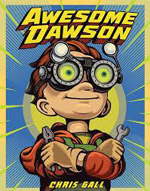 A born inventor, Dawson spends his free time thinking of uses for discards. For most of his short life, he's been creating new products from simple tools and the stuff other folks throw away. This eco-friendly boy is convinced that he can find a way to recycle most everything that others are getting rid of. He particularly likes to restore toys and give them second chances. But his construction of a cat food-powered robot to complete his chores is all too successful, with the Vacu-Maniac sucking up everything in sight. That’s not a problem until it bursts out of Dawson’s house and heads out into the neighborhood. It will take some inventive thinking and fast action to save the town from being annihilated. The book's colorful illustrations, created by engraving on a clay board coated with ink and Adobe software, will have eye-appeal for young readers who are likely to be fascinated by all their details. The endpapers add to the book's delights, featuring a garbage dump with vehicles, sinks, and billboards and a sign for MacGyver Street, and encouraging close examination. Although the pages may be too packed with objects for adult eyes, this picture book is bound to excite many youngsters and maybe inspire some interesting creations fashioned from junk.
A born inventor, Dawson spends his free time thinking of uses for discards. For most of his short life, he's been creating new products from simple tools and the stuff other folks throw away. This eco-friendly boy is convinced that he can find a way to recycle most everything that others are getting rid of. He particularly likes to restore toys and give them second chances. But his construction of a cat food-powered robot to complete his chores is all too successful, with the Vacu-Maniac sucking up everything in sight. That’s not a problem until it bursts out of Dawson’s house and heads out into the neighborhood. It will take some inventive thinking and fast action to save the town from being annihilated. The book's colorful illustrations, created by engraving on a clay board coated with ink and Adobe software, will have eye-appeal for young readers who are likely to be fascinated by all their details. The endpapers add to the book's delights, featuring a garbage dump with vehicles, sinks, and billboards and a sign for MacGyver Street, and encouraging close examination. Although the pages may be too packed with objects for adult eyes, this picture book is bound to excite many youngsters and maybe inspire some interesting creations fashioned from junk.
- Barbara A. Ward, Washington State University Pullman
Heshka, Ryan. (2013). Welcome to robot town. New York: Henry Holt and Co.
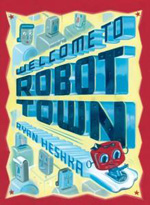 From a child robot’s point of view, this book takes young readers into the everyday life of a young robot in Robot Town from waking up in the morning as the “wheels start turning” to walking to school where the Traffic Bot directs young robot (carrying his Iron Guy lunch box) across the street. On the way to school he passes Mechanic Crank Shaft who repairs robot cars. Principal Nutzundbolts, a famous inventor, greets the little robots when they arrive at school. After school, the young robots burn off energy doing things for fun like watching the movie set of Director Steelburg on Aluminum Avenue. Many career spinoffs are featured on double page spreads like Dr. Socket, Clean-up Crew, Recyclotron, Telly Scope at the observatory and more. At the end of this busy day, Little Robot is ready to rest and recharge for tomorrow. Acrylic and collage illustrations add to the fun and mechanics of this introduction to all that robots can do. Enjoy a fun little mechanized voice book trailer at YouTube or read more of the backstory at the MacKids blog. Pair with Robots of the Future (Brasch) reviewed below.
From a child robot’s point of view, this book takes young readers into the everyday life of a young robot in Robot Town from waking up in the morning as the “wheels start turning” to walking to school where the Traffic Bot directs young robot (carrying his Iron Guy lunch box) across the street. On the way to school he passes Mechanic Crank Shaft who repairs robot cars. Principal Nutzundbolts, a famous inventor, greets the little robots when they arrive at school. After school, the young robots burn off energy doing things for fun like watching the movie set of Director Steelburg on Aluminum Avenue. Many career spinoffs are featured on double page spreads like Dr. Socket, Clean-up Crew, Recyclotron, Telly Scope at the observatory and more. At the end of this busy day, Little Robot is ready to rest and recharge for tomorrow. Acrylic and collage illustrations add to the fun and mechanics of this introduction to all that robots can do. Enjoy a fun little mechanized voice book trailer at YouTube or read more of the backstory at the MacKids blog. Pair with Robots of the Future (Brasch) reviewed below.
- Karen Hildebrand, Ohio Library and Reading Consultant
GRADES 3-5
Allen, Kathy. (2013). Cell phone safety. Mankato, MN: Capstone Press.
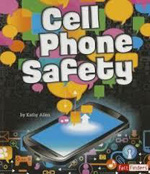 Although cell phones are ubiquitous, many users often fail to practice safety when using the devices, giving out personal information, current location, and forgetting that the same safety rules that apply to face to face encounters with strangers apply to encounters through cell phones. This informative title sounds a cautionary note about how to use the devices wisely. In several “Talk about It” sections, readers encounter cell phone-related problems to solve such as whether to respond to a text from an unknown number, what to do if you follow a friend's texted link to an inappropriate website, or even precautionary measures to prevent identity theft. The book also contains vignettes about cyber bullying as a reminder of how technology can be used in the wrong way. Although the information provided here is basic, it is also important and provides guidelines designed to protect the user.
Although cell phones are ubiquitous, many users often fail to practice safety when using the devices, giving out personal information, current location, and forgetting that the same safety rules that apply to face to face encounters with strangers apply to encounters through cell phones. This informative title sounds a cautionary note about how to use the devices wisely. In several “Talk about It” sections, readers encounter cell phone-related problems to solve such as whether to respond to a text from an unknown number, what to do if you follow a friend's texted link to an inappropriate website, or even precautionary measures to prevent identity theft. The book also contains vignettes about cyber bullying as a reminder of how technology can be used in the wrong way. Although the information provided here is basic, it is also important and provides guidelines designed to protect the user.
- Barbara A. Ward, Washington State University Pullman
Brasch, Nicolas. (2013). Robots of the future. PowerKids Press.
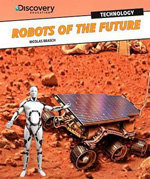 Color photographs and easy-to-understand text make this book an accessible approach to understanding robots and all the things they are capable of doing in today’s society. The variety of things that robots can do and the consistency and precision in which they perform are explained to young readers. Included in the book are question boxes entitled, “You Decide,” that ask probing questions that may have a controversial edge to the use of robotic technology. For example, “Will robotic research and technology do more good for humans than bad?” The end of the book includes a glossary and websites for further investigation.
Color photographs and easy-to-understand text make this book an accessible approach to understanding robots and all the things they are capable of doing in today’s society. The variety of things that robots can do and the consistency and precision in which they perform are explained to young readers. Included in the book are question boxes entitled, “You Decide,” that ask probing questions that may have a controversial edge to the use of robotic technology. For example, “Will robotic research and technology do more good for humans than bad?” The end of the book includes a glossary and websites for further investigation.
- Karen Hildebrand, Ohio Library and Reading Consultant
Demuth, Patricia. (2013). Who is Bill Gates? Illus. by Ted Hammond. New York: Grosset and Dunlap.
 Biographies continue to be a much studied and enjoyed genre and the CCSS continue this support. From the publisher’s Who Was… series, this book introduces young readers to the life of Bill Gates, business magnate, investor, philanthropist, and author.” Bill Gates was born in Seattle, Washington, in 1955. Even as a child, he had an interest in gadgets and budding technology. As he continued his career and developed ways to improve on the personal computer it lead to his creation of the Microsoft Company. Bill amassed a fortune through this very successful computer company, and then decisions faced him about how best to use his fortune. Together with his wife, they formed the Bill and Melinda Gates Foundation and have sponsored many initiatives in education, world health, and community giving. This early biography not only introduces young readers to the life of Bill Gates but also to the idea of philanthropy.
Biographies continue to be a much studied and enjoyed genre and the CCSS continue this support. From the publisher’s Who Was… series, this book introduces young readers to the life of Bill Gates, business magnate, investor, philanthropist, and author.” Bill Gates was born in Seattle, Washington, in 1955. Even as a child, he had an interest in gadgets and budding technology. As he continued his career and developed ways to improve on the personal computer it lead to his creation of the Microsoft Company. Bill amassed a fortune through this very successful computer company, and then decisions faced him about how best to use his fortune. Together with his wife, they formed the Bill and Melinda Gates Foundation and have sponsored many initiatives in education, world health, and community giving. This early biography not only introduces young readers to the life of Bill Gates but also to the idea of philanthropy.
- Karen Hildebrand, Ohio Library and Reading Consultant
Enz, Tammy. (2014). Max Axiom STEM adventures: The terrific tale of television technology. Mankato, MN: Capstone Press.
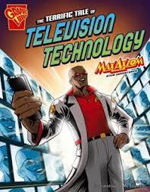 As he often does, savvy scientist Max Axiom takes advantage of a televised football game to which his friends are glued to explain the inner workings of television and how those images and sounds that have everyone so mesmerized are transmitted into homes. After describing the camera recordings that capture the game, the articulate and well-informed Axiom explains how radio waves allow TV technology to exist. One of the last pieces of technology he discusses is a remote control device, something with which most readers will be familiar although they are not likely to know that it relies on the electromagnetic spectrum to function. Additionally, he explains how satellite and cable TV work. But none of the radio waves or digital signals would matter without how the human brain reads them. The colorful cartoon panels that tell Max's story and allow him to share his knowledge with readers are appealing, and show the practical side to technology.
As he often does, savvy scientist Max Axiom takes advantage of a televised football game to which his friends are glued to explain the inner workings of television and how those images and sounds that have everyone so mesmerized are transmitted into homes. After describing the camera recordings that capture the game, the articulate and well-informed Axiom explains how radio waves allow TV technology to exist. One of the last pieces of technology he discusses is a remote control device, something with which most readers will be familiar although they are not likely to know that it relies on the electromagnetic spectrum to function. Additionally, he explains how satellite and cable TV work. But none of the radio waves or digital signals would matter without how the human brain reads them. The colorful cartoon panels that tell Max's story and allow him to share his knowledge with readers are appealing, and show the practical side to technology.
- Barbara A. Ward, Washington State University Pullman
Forest, Christopher. (2013). Robot competitions. Mankato, MN: Capstone Press.
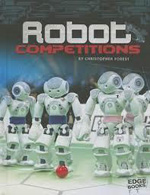 Robots are no longer simply features of movies or in science fiction books. Today they are often used in contests of strength and agility. For many teens and adults, the robots they build engage in competitions to determine supremacy between human-robot teams. This book describes some of those contests such as BattleBots and For Inspiration and Recognition of Science and Technology (FIRST), events intended to spark an interest in science, engineering, and technology. There are even robotic contests that are held underwater, and some held in exotic locales such as in the Australian Outback. Filled with photographs of some of the intense competitions in which youngsters and their robots engage, this book is a great reminder that many innovations began as experimental designs in competitions for robots.
Robots are no longer simply features of movies or in science fiction books. Today they are often used in contests of strength and agility. For many teens and adults, the robots they build engage in competitions to determine supremacy between human-robot teams. This book describes some of those contests such as BattleBots and For Inspiration and Recognition of Science and Technology (FIRST), events intended to spark an interest in science, engineering, and technology. There are even robotic contests that are held underwater, and some held in exotic locales such as in the Australian Outback. Filled with photographs of some of the intense competitions in which youngsters and their robots engage, this book is a great reminder that many innovations began as experimental designs in competitions for robots.
- Barbara A. Ward, Washington State University Pullman
Hunter, Nick. (2013). How electric and hybrid cars work. New York: Gareth Stevens Publisher.
 From the EcoWorks series promoting ideas of consumer awareness comes this look at automobiles as means of transportation that are earth friendly. Though consumers are rushing toward the best fuel efficiency there are other considerations when selecting one of these cars for purchase. Full color photos make this book appealing to young readers. Looking at the pros and cons of electric and hyrid cars will help shape the decision of the future of these modes of transportation. The author looks at hybrid engines, batteries, creation and use of fuel, the greenhouse effect and carbon emissions and other eco-friendly aspects of hybrid cars in addition to perhaps the less favorable aspects like speed and cost of these new vehicles. Introduce this book with the video from “How Stuff Works” website.
From the EcoWorks series promoting ideas of consumer awareness comes this look at automobiles as means of transportation that are earth friendly. Though consumers are rushing toward the best fuel efficiency there are other considerations when selecting one of these cars for purchase. Full color photos make this book appealing to young readers. Looking at the pros and cons of electric and hyrid cars will help shape the decision of the future of these modes of transportation. The author looks at hybrid engines, batteries, creation and use of fuel, the greenhouse effect and carbon emissions and other eco-friendly aspects of hybrid cars in addition to perhaps the less favorable aspects like speed and cost of these new vehicles. Introduce this book with the video from “How Stuff Works” website.
- Karen Hildebrand, Ohio Library and Reading Consultant
Richards, Jon and Ed Simpkins. (2013). The human world; the world in infographics. Berkeley, CA: Owlkids.
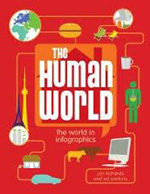 What is an infographic? On the opening page of The Human World, not only will young readers immediately see what an infographic is, the opening statement explains, “Welcome to the world of infographics. Using icons, graphics and pictograms, infographics visualize date and information in a whole new way!” Bursting with colorful charts, diagrams, facts, figures, text boxes, inserts, text types and more, this visual splash of information and facts covers global topics including people, cities, population, heights of buildings, wealth and poverty, going global, water resources, waste, dwindling resources, transportation, communication, work, rest and play and more. The use of statistics applied to colorful charts and diagrams are so much more easily understood and compared by using the infographics presented here. Teacher resource guides are available for some of the books in this series at the OwlKids website. (Other books in the World of Infographics series are The Human Body, The Natural World, and Planet Earth.)
What is an infographic? On the opening page of The Human World, not only will young readers immediately see what an infographic is, the opening statement explains, “Welcome to the world of infographics. Using icons, graphics and pictograms, infographics visualize date and information in a whole new way!” Bursting with colorful charts, diagrams, facts, figures, text boxes, inserts, text types and more, this visual splash of information and facts covers global topics including people, cities, population, heights of buildings, wealth and poverty, going global, water resources, waste, dwindling resources, transportation, communication, work, rest and play and more. The use of statistics applied to colorful charts and diagrams are so much more easily understood and compared by using the infographics presented here. Teacher resource guides are available for some of the books in this series at the OwlKids website. (Other books in the World of Infographics series are The Human Body, The Natural World, and Planet Earth.)
- Karen Hildebrand, Ohio Library and Reading Consultant
Schwartz, Heather E. (2013). Cyberbullying. Mankato, MN: Capstone Press.
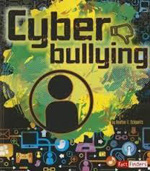 Beginning with a chapter entitled, “What is Cyberbullying?” this colorful book presents ideas for young people on how to deal with people who are online and trying to bully, stalk, steal identity, or simply ruin some of the fun parts of online activity. Using bold text, glossary boxes, ideas to “Talk about it”, illustrations, and color photography, Cyberbulling creates a guide for dealing with these situations that can become annoying as well as dangerous. Interestingly, the author also poses the question, “Are You the Cyberbully?” (p.8) Using guiding questions that begin, “Have you ever …” the author continues with questions that ask, for example, “… forward a funny, but not very nice, e-mail about someone?” Other chapters describe: how cyberbullying works; the effects of cyberbullying; bullies getting in trouble; a safe space; take a break (have some fun in real time with no technology, ride a bike, take a walk); taking control; bold bystanders; sorry cyber-bullies; preventive measures. The book concludes with a glossary, a bibliography for further reading, and available websites. The Engage blog also has many posts and articles with insights on how to stop bullying.
Beginning with a chapter entitled, “What is Cyberbullying?” this colorful book presents ideas for young people on how to deal with people who are online and trying to bully, stalk, steal identity, or simply ruin some of the fun parts of online activity. Using bold text, glossary boxes, ideas to “Talk about it”, illustrations, and color photography, Cyberbulling creates a guide for dealing with these situations that can become annoying as well as dangerous. Interestingly, the author also poses the question, “Are You the Cyberbully?” (p.8) Using guiding questions that begin, “Have you ever …” the author continues with questions that ask, for example, “… forward a funny, but not very nice, e-mail about someone?” Other chapters describe: how cyberbullying works; the effects of cyberbullying; bullies getting in trouble; a safe space; take a break (have some fun in real time with no technology, ride a bike, take a walk); taking control; bold bystanders; sorry cyber-bullies; preventive measures. The book concludes with a glossary, a bibliography for further reading, and available websites. The Engage blog also has many posts and articles with insights on how to stop bullying.
- Karen Hildebrand, Ohio Library and Reading Consultant
GRADES 6-8
Bender, Lionel. (2013). Invention. Special photography by Dave King. Revised edition. New York: DK Publisher.
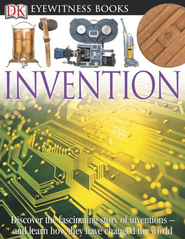 Known for their exquisite photography, publisher Dorling Kindersley and author Lionel Bender bring this revised edition of Invention to the Eyewitness series. Throughout history, inventions have changed the world and how we live. From early inventions and technology like the wheel, or the gear, the abacus, and early timekeeping devices to the discovery of rockets, telecommunication, silicon chips, and more Bender provides a visual timeline of amazing inventions and the stories behind them.
Known for their exquisite photography, publisher Dorling Kindersley and author Lionel Bender bring this revised edition of Invention to the Eyewitness series. Throughout history, inventions have changed the world and how we live. From early inventions and technology like the wheel, or the gear, the abacus, and early timekeeping devices to the discovery of rockets, telecommunication, silicon chips, and more Bender provides a visual timeline of amazing inventions and the stories behind them.
- Karen Hildebrand, Ohio Library and Reading Consultant
Frederick, Shane. (2013). The technology of football. Mankato, MN: Capstone Press.
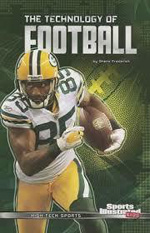 Sports Illustrated Kids has prepared this “High-Tech Sports” series. The author has written the book so that sports aficionados as well tech-interested kids will enjoy learning about the application of technology into various aspects of the sports industry. The football volume opens with a bit of the history of the game beginning with a chart of helmets through the years and how for safety and protection the helmets have better insulated the players’ heads from brain injuries after hard tackles. He goes on to discuss shoulder pads and how they are designed to absorb the shock of hard hits and tackles. Jerseys that were made to keep players cooler and drier have been developed. On to stadiums and a look at Astroturf and the early artificial turf that actually caused injury to today’s Field Turf that is much improved and safer using silica and cryogenic rubber. Other aspects of stadium design from domes that now cover many outdoor stadiums to the fan experience of watching plays on big-screen TVs in the stadium. Color photography, fact boxes, short paragraphs, a detailed index at the end with a glossary and bibliography add to the text features of the book. (Other books in this series are The Technology of Basketball, The Technology of Baseball, and The Technology of Hockey.)
Sports Illustrated Kids has prepared this “High-Tech Sports” series. The author has written the book so that sports aficionados as well tech-interested kids will enjoy learning about the application of technology into various aspects of the sports industry. The football volume opens with a bit of the history of the game beginning with a chart of helmets through the years and how for safety and protection the helmets have better insulated the players’ heads from brain injuries after hard tackles. He goes on to discuss shoulder pads and how they are designed to absorb the shock of hard hits and tackles. Jerseys that were made to keep players cooler and drier have been developed. On to stadiums and a look at Astroturf and the early artificial turf that actually caused injury to today’s Field Turf that is much improved and safer using silica and cryogenic rubber. Other aspects of stadium design from domes that now cover many outdoor stadiums to the fan experience of watching plays on big-screen TVs in the stadium. Color photography, fact boxes, short paragraphs, a detailed index at the end with a glossary and bibliography add to the text features of the book. (Other books in this series are The Technology of Basketball, The Technology of Baseball, and The Technology of Hockey.)
- Karen Hildebrand, Ohio Library and Reading Consultant
Gray, Leon. (2013). Global positioning system: who’s tracking you? New York: Gareth Stevens Publisher.
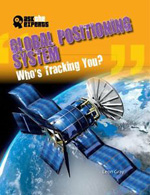 The term GPS is starting to become a household term and most people consider it a helpful tool in locating places they need to go. Golfers and hikers, fishfinders and other athletes or sporting enthusiasts are using GPS to help find the target of their sport. The military use of GPS ranges from vehicles to weaponry. Conservationists are tracking animals with tagged GPS units to help observe and maintain certain animal populations. But the debates are starting as to the invasiveness of GPS into our personal and private lives. The author has provided ideas dealing with both sides of the GPS privacy issues. The use of sidebars, fact boxes, color photography, and “The Debate” text boxes are inviting text features that will draw young readers into the topic. “You’re the Expert” poses questions for reader to think about and weigh all sides of the issue as you think about all the uses of this new technology and the ethics of GPS use.
The term GPS is starting to become a household term and most people consider it a helpful tool in locating places they need to go. Golfers and hikers, fishfinders and other athletes or sporting enthusiasts are using GPS to help find the target of their sport. The military use of GPS ranges from vehicles to weaponry. Conservationists are tracking animals with tagged GPS units to help observe and maintain certain animal populations. But the debates are starting as to the invasiveness of GPS into our personal and private lives. The author has provided ideas dealing with both sides of the GPS privacy issues. The use of sidebars, fact boxes, color photography, and “The Debate” text boxes are inviting text features that will draw young readers into the topic. “You’re the Expert” poses questions for reader to think about and weigh all sides of the issue as you think about all the uses of this new technology and the ethics of GPS use.
- Karen Hildebrand, Ohio Library and Reading Consultant
Heppermann, Christine. (2013). Twitter; the company and its founders. Minneapolis: ABDO Publishers.
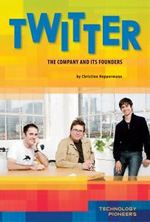 The lives of Twitter founders and developers Jack Dorsey, Evan Williams, and Christopher “Biz” Stone are presented in this book for young readers. Their early lives, growing up, and where they went to school are described and how they conceived and developed the social network of Twitter. The rapid growth and popularity of their concept and company are explained in addition to information and thoughts on the future of this pioneering piece of technology.(Also in this series: Microsoft, Facebook, Netflix, Amazon, Apple, Sony, TiVo.)
The lives of Twitter founders and developers Jack Dorsey, Evan Williams, and Christopher “Biz” Stone are presented in this book for young readers. Their early lives, growing up, and where they went to school are described and how they conceived and developed the social network of Twitter. The rapid growth and popularity of their concept and company are explained in addition to information and thoughts on the future of this pioneering piece of technology.(Also in this series: Microsoft, Facebook, Netflix, Amazon, Apple, Sony, TiVo.)
- Karen Hildebrand, Ohio Library and Reading Consultant
MacKay, Jenny. (2013). Online schools. San Diego, CA: Lucent Books.
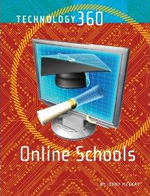 Online Schools takes a look at alternative education and what opportunities are available through the virtual environment in education. This book discusses how online schooling has evolved and how it got started. With color photographs and text boxes, it offers current examples of students and schools using online classes and the potential online schooling offers and the reasons it can become the education alternative needed in certain family or location circumstances. It concludes with the potential for continued and further possibilities in online education for many levels of education from elementary school to advanced professional degrees.
Online Schools takes a look at alternative education and what opportunities are available through the virtual environment in education. This book discusses how online schooling has evolved and how it got started. With color photographs and text boxes, it offers current examples of students and schools using online classes and the potential online schooling offers and the reasons it can become the education alternative needed in certain family or location circumstances. It concludes with the potential for continued and further possibilities in online education for many levels of education from elementary school to advanced professional degrees.
- Karen Hildebrand, Ohio Library and Reading Consultant
Rooney, Anne. (2014). Computer science and IT: Investigating a cyber attack. Chicago, IL: Heinemann Library.
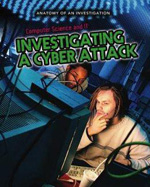 Middle grade and YA readers will find this step-by-step realization of a possible hacked email account or computer and its subsequent resolution to be fascinating. What makes the book especially pertinent are how easily things go wrong and how careless the main character is with his password, something of which most of us are guilty. When Ben notices something odd about a page displayed on his computer, he worries at first that one of his friends has stolen his password. But things turn out to be much worse than Ben had imagined. After investigation by his company's IT expert to confirm the attack and determine the parts of the system that have been compromised, the police get involved, and forensic experts look for clues as to when the files were accessed. Readers are drawn into the investigation through a series of clues that may enable them to crack the case while sounding cautionary notes for their own computer use. The author stresses the need to protect personal data from others, and suggests simple actions that can prevent hacked accounts such as changing passwords frequently, using firewalls, and never storing passwords on public computers. Who knew that cyber sleuthing was so complicated and yet so similar to other types of detective work?
Middle grade and YA readers will find this step-by-step realization of a possible hacked email account or computer and its subsequent resolution to be fascinating. What makes the book especially pertinent are how easily things go wrong and how careless the main character is with his password, something of which most of us are guilty. When Ben notices something odd about a page displayed on his computer, he worries at first that one of his friends has stolen his password. But things turn out to be much worse than Ben had imagined. After investigation by his company's IT expert to confirm the attack and determine the parts of the system that have been compromised, the police get involved, and forensic experts look for clues as to when the files were accessed. Readers are drawn into the investigation through a series of clues that may enable them to crack the case while sounding cautionary notes for their own computer use. The author stresses the need to protect personal data from others, and suggests simple actions that can prevent hacked accounts such as changing passwords frequently, using firewalls, and never storing passwords on public computers. Who knew that cyber sleuthing was so complicated and yet so similar to other types of detective work?
- Barbara A. Ward, Washington State University Pullman
GRADES 9-12
Dashner, James. (2013). The eye of minds. New York: Delacorte Press.
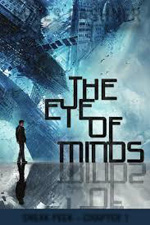 Turning to the world of fiction and from the author of The Maze Runner trilogy, comes the first volume in James Dashner’s new series, The Mortality Doctrine. Young Michael is entrenched in the world of virtual reality and is a skilled Internet gamer in Virtnet. He is engaged in Lifeblood Deep with virtual friends Bryson and Sarah. Michael is fearful when Virtual Network Security track him down but finds they want his hacking skills to locate a gamer named Kaine who is wreaking havoc on Virtnet to the point of pushing one game to suicide. Michael and his virtual friends plummet headlong into cyber adventure and danger as they pursue Kaine. Fast paced and high energy bring this tech novel to fans of sci fi who enjoyed Dashner’s earlier work. With the recent popularity and release of the movie, Ender’s Game (1985, Orson Scott Card), readers might enjoy thinking about comparisons between the two novels.
Turning to the world of fiction and from the author of The Maze Runner trilogy, comes the first volume in James Dashner’s new series, The Mortality Doctrine. Young Michael is entrenched in the world of virtual reality and is a skilled Internet gamer in Virtnet. He is engaged in Lifeblood Deep with virtual friends Bryson and Sarah. Michael is fearful when Virtual Network Security track him down but finds they want his hacking skills to locate a gamer named Kaine who is wreaking havoc on Virtnet to the point of pushing one game to suicide. Michael and his virtual friends plummet headlong into cyber adventure and danger as they pursue Kaine. Fast paced and high energy bring this tech novel to fans of sci fi who enjoyed Dashner’s earlier work. With the recent popularity and release of the movie, Ender’s Game (1985, Orson Scott Card), readers might enjoy thinking about comparisons between the two novels.
- Karen Hildebrand, Ohio Library and Reading Consultant
Looking for apps for reading? See these websites:
Blogs about children's literature:
Last year we created a list of great blogs for children’s and YA literature. We have added a few more blogs to the list:
These reviews are submitted by members of the International Reading Association's Children's Literature and Reading Special Interest Group (CL/R SIG) and are published weekly on Reading Today Online. The International Reading Association partners with the National Council of Teachers of English and Verizon Thinkfinity to produce ReadWriteThink.org, a website devoted to providing literacy instruction and interactive resources for grades K–12.